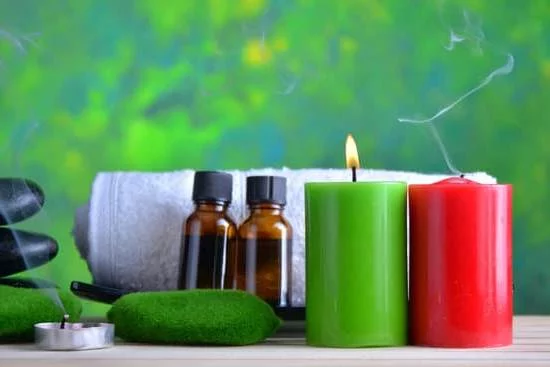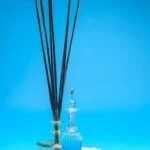Aromatherapy, a holistic healing treatment that uses natural plant extracts to promote health and well-being, has been practiced for centuries. Essential oils, the key components of aromatherapy, are known for their therapeutic properties and have been used for relaxation, stress relief, and healing purposes. In this article, we will explore the different methods of heating essential oils for aromatherapy and discuss the benefits and safety precautions associated with these practices.
Aromatherapy is widely recognized for its ability to enhance both physical and emotional health. The use of essential oils in aromatherapy has been shown to reduce anxiety, improve sleep quality, alleviate symptoms of depression, and boost overall mood.
Additionally, essential oils are used in holistic healing practices to relieve pain, improve cognitive function, and support the immune system. With so many potential benefits, it’s no wonder that essential oil diffusion through heating has become a popular method for enjoying their therapeutic effects.
When it comes to heating essential oils for aromatherapy, there are various methods to choose from. From diffusers to heating pads, each approach offers unique advantages in terms of maximizing the therapeutic properties of the oils and enhancing their diffusion into the air.
However, it is also important to consider safety precautions when using heat to release the aromatic compounds from essential oils. Proper dilution, avoiding direct skin contact with undiluted oils, and using caution when heating oils are essential considerations in order to prevent burns or fire hazards.
Understanding the Different Methods of Heating Essential Oils
When it comes to heating essential oils for aromatherapy, there are several methods that can be used to release the therapeutic benefits of these oils into the air. It is important to understand the different methods available in order to choose the most suitable one for your needs and preferences.
Diffusers
One popular method for heating essential oils is through the use of diffusers. These devices disperse the oil particles into the air, allowing for easy inhalation and absorption. There are several types of diffusers available, including ultrasonic diffusers, nebulizing diffusers, and evaporative diffusers. Each type has its own mechanism for heating and releasing essential oils, so individuals can choose based on their specific requirements.
Warm Water Baths
Another method for heating essential oils is by using warm water baths. This involves placing a bowl of hot water with a few drops of essential oil added to it. The heat from the water helps to release the aromatic compounds in the oil, creating a soothing and fragrant atmosphere.
Electric or Tea Light Diffusers
Electric or tea light diffusers are convenient options for heating essential oils. These devices often come in decorative designs and utilize gentle heat to vaporize the oils without altering their beneficial properties. Electric diffusers can be left plugged in for extended periods, while tea light diffusers require a small candle underneath to generate heat.
Heating Pads
Heating pads designed specifically for use with essential oils provide another way to effectively heat these natural extracts. These pads are often made with materials that can absorb and retain heat, allowing users to apply their favorite scents directly onto them for a continuous diffusion process.
Understanding these different methods allows individuals to choose a heating method that best suits their lifestyle, location, and personal preferences when engaging in aromatherapy practices. These various methods offer flexibility in terms of usage and let users enjoy the benefits of essential oil diffusion in different settings such as homes, offices, or during travel.
Safety Precautions When Heating Essential Oils
When using essential oils for aromatherapy, it is important to take safety precautions, especially when heating the oils. One of the key considerations is how to heat essential oils for aromatherapy without causing harm or accidents. Proper dilution of essential oils is vital when using any heating method.
Undiluted essential oils can be too potent and may cause skin irritation or other adverse reactions. Always dilute essential oils with a carrier oil before applying them to your skin or using them in a diffuser.
Direct skin contact with undiluted essential oils can lead to burns, rashes, or allergic reactions. Therefore, it is crucial to avoid direct skin contact with undiluted oils when heating them for aromatherapy purposes. It is recommended to use caution and follow proper guidelines when using any heating method to prevent burns or fire hazards.
The ideal way to heat essential oils for aromatherapy depends on the specific method being used, whether it’s a diffuser, warm water bath, electric or tea light diffuser, or heating pad. Each method has its own set of instructions and precautions that should be followed to ensure safety and effectiveness. Taking the time to learn about each method and understand how they work will help you enjoy the benefits of aromatherapy while minimizing potential risks.
| Heating Method | Safety Precautions |
|---|---|
| Diffuser | Ensure proper dilution of the essential oil and follow manufacturer’s instructions carefully. |
| Warm Water Bath | Avoid direct contact with hot water and keep the area well-ventilated. |
| Electric/Tea Light Diffuser | Use caution with open flames and never leave unattended. |
| Heating Pad | Avoid overheating and always place a barrier between skin and pad. |
Benefits of Heating Essential Oils
Heating essential oils offers several benefits that contribute to maximizing the therapeutic properties of the oils and enhancing their overall effectiveness in aromatherapy. One of the key advantages of heating essential oils is the enhanced diffusion that occurs when the oils are heated.
When essential oils are heated, their molecules are dispersed more effectively into the air, allowing for a wider and more consistent distribution of the fragrance and therapeutic properties throughout a space. This can be particularly beneficial for larger rooms or areas where traditional methods of diffusing essential oils may not reach as effectively.
Additionally, heating essential oils facilitates better absorption into the air, which can lead to improved inhalation and therapeutic effects. This is especially advantageous for individuals utilizing aromatherapy for respiratory or sinus relief, as the heated essential oils can help open up airways and provide relief from congestion. The increased absorption into the air also means that individuals within the vicinity of the heated oils can benefit from their properties, making it an efficient and convenient way to enjoy aromatherapy.
Moreover, by heating essential oils, individuals can maximize the therapeutic properties of the oils themselves. Different essential oils have distinct characteristics and benefits, such as calming effects, mood enhancement, stress reduction, or even antibacterial properties. Heating these oils can help release these beneficial components more efficiently, thus allowing individuals to fully experience and benefit from their intended therapeutic effects.
| Advantages | Description |
|---|---|
| Enhanced Diffusion | The molecules disperse effectively into the air due to heat. |
| Better Absorption Into The Air | Improved inhalation and therapeutic effects. |
| Maximizing Therapeutic Properties | Release beneficial components efficiently for maximum effect. |
Choosing the Right Essential Oils for Heating
When choosing essential oils for heating, it’s important to consider their intended use and therapeutic properties. Different essential oils offer various benefits, including relaxation, stress relief, sleep aid, and more. Here are some tips for selecting the right essential oils based on their intended use:
- Relaxation: For promoting relaxation and creating a calming atmosphere, consider using essential oils such as lavender, chamomile, bergamot, or frankincense. These oils are known for their soothing and stress-relieving properties, making them ideal for heating in aromatherapy sessions or before bedtime.
- Stress Relief: To alleviate stress and tension, opt for essential oils like rosemary, peppermint, eucalyptus, or ylang-ylang. These oils can help reduce anxiety and promote a sense of calmness when heated during aromatherapy practices or while unwinding after a long day.
- Sleep Aid: When seeking essential oils to promote better sleep and relaxation, look for options such as lavender, cedarwood, sandalwood, or sweet marjoram. These calming oils can be used in diffusers or warm water baths to create a peaceful ambiance that enhances restful sleep.
- Other Therapeutic Purposes: Essential oils have diverse therapeutic properties that can address various needs such as boosting energy (citrus oils), relieving headaches (peppermint), enhancing focus (rosemary), and supporting respiratory health (eucalyptus). Consider these factors when selecting essential oils for specific purposes during aromatherapy sessions.
Overall, the selection of essential oils for heating should align with the desired outcome of your aromatherapy practice. By understanding the unique benefits of each oil and considering their intended use, you can create personalized experiences that cater to your specific wellness goals.
Remember that the quality of essential oils is crucial when using them for heating in aromatherapy. Be sure to choose pure and high-quality products from reputable sources to ensure optimal results.
Step-by-Step Guide on How to Heat Essential Oils
Heating essential oils is a popular method for enjoying the therapeutic benefits of aromatherapy. Whether you prefer a diffuser, warm water bath, electric or tea light diffuser, or heating pad, each method offers its unique advantages. Below is a step-by-step guide on how to heat essential oils using these different methods:
1. Diffusers: Electric diffusers are convenient and easy to use. Simply fill the diffuser with water and add a few drops of your chosen essential oil. Turn on the diffuser and let it emit a fine mist of aromatic vapor into the air.
2. Warm Water Baths: For a relaxing and soothing experience, add a few drops of essential oil to a bowl of warm water. Place the bowl in a safe and stable location, close your eyes, and inhale deeply to enjoy the calming effects of the scented steam.
3. Electric or Tea Light Diffusers: These devices use heat to gently vaporize essential oils, dispersing their fragrance throughout the room. Follow the manufacturer’s instructions for adding essential oils and operating the device safely.
4. Heating Pads: To create a portable aromatherapy experience, apply a few drops of essential oil onto a fabric pad or handkerchief and place it on top of a heating pad set to low heat. The gentle warmth will help release the aroma of the oil into the surrounding area.
Tips for Optimal Results:
– Use high-quality, pure essential oils from reputable sources for best results.
– Experiment with different oil blends to find combinations that work well for your specific needs.
– Avoid overheating oils or leaving them unattended to prevent safety hazards.
– Clean your diffuser or heating pads regularly to maintain optimal performance and prevent clogging.
Remember that heating essential oils should always be done with care and attention to safety guidelines in order to fully enjoy their benefits for aromatherapy experiences at home, in the office, or while traveling.
Recommendations for Heating Essential Oils in Different Settings
Home Heating Methods
When heating essential oils at home, one of the most popular methods is using an essential oil diffuser. This device disperses the oil into the air through a fine mist, allowing for easy inhalation and absorption. Another common method is heating oils in a bowl of warm water or using an electric or tea light diffuser. These methods are effective for creating a soothing and relaxing atmosphere in your home.
Office Heating Methods
Heating essential oils in an office setting can be beneficial for reducing stress and increasing focus. A portable USB diffuser or a small desktop diffuser can be ideal for enjoying the benefits of aromatherapy at work. Additionally, using a heating pad designed specifically for essential oils can provide a subtle and continuous release of fragrance in your office space without causing disturbance to others.
Travel Heating Methods
For those who are often on the go, there are convenient options for heating essential oils during travel. Portable diffusers that can be powered by USB or battery-operated mini diffusers are perfect for use in hotel rooms, airports, or even during long car rides. These compact devices allow you to continue experiencing the therapeutic benefits of aromatherapy regardless of your location.
In order to ensure safety and maximize the effectiveness of your chosen method, it is important to carefully follow the manufacturer’s instructions for each device. No matter where you are, it is crucial to heat essential oils responsibly and mindfully in order to fully enjoy their aromatic and therapeutic properties.
Alternative Methods for Aromatherapy
In conclusion, there are numerous benefits to heating essential oils for aromatherapy, and understanding the various methods and safety precautions is crucial for a successful and enjoyable experience. From diffusers to warm water baths, electric or tea light diffusers, and heating pads, the options for heating essential oils are diverse and offer unique advantages.
By selecting the right essential oils based on their intended use and following a step-by-step guide for heating them, individuals can maximize the therapeutic properties of the oils for relaxation, stress relief, sleep aid, and overall well-being.
It is important to note that while heating essential oils can enhance their diffusion and absorption into the air, safety precautions such as dilution and avoiding direct skin contact with undiluted oils should always be observed. Additionally, careful consideration when choosing the appropriate method of heating is crucial in order to prevent burns or fire hazards. Whether using essential oil heating methods in a home, office, or during travel, it is essential to follow recommendations for optimal results.
While heating essential oils is an effective method for aromatherapy, there are also alternative methods for enjoying the benefits of these oils including topical application, inhalation, and their use in bath and body products. Exploring these alternate methods allows individuals to customize their aromatherapy experience based on personal preferences and needs.
With proper knowledge of how to heat essential oils for aromatherapy along with an understanding of other methods for utilizing them, individuals can fully embrace the many wellness benefits that essential oils have to offer.
Frequently Asked Questions
How Do You Heat Essential Oils?
Essential oils can be heated using a diffuser, which disperses the aroma throughout the room. Another method is to add a few drops to a bowl of hot water or use an essential oil warmer.
How Do You Heat Essential Oils Without a Diffuser?
If you don’t have a diffuser, you can still heat essential oils by using alternative methods. One option is to place a few drops on a cotton ball and put it near a heat source, such as a radiator or vent.
Do Essential Oils Lose Potency When Heated?
Heating essential oils can cause them to evaporate more quickly, potentially leading to some loss of potency over time. It’s important to store essential oils properly and avoid overheating them in order to preserve their effectiveness.

Are you looking for a natural way to improve your health and wellbeing?
If so, aromatherapy may be the answer for you.





